Priscilla Coleman
All rise for the quick-witted, sharp-pencilled courtroom artist
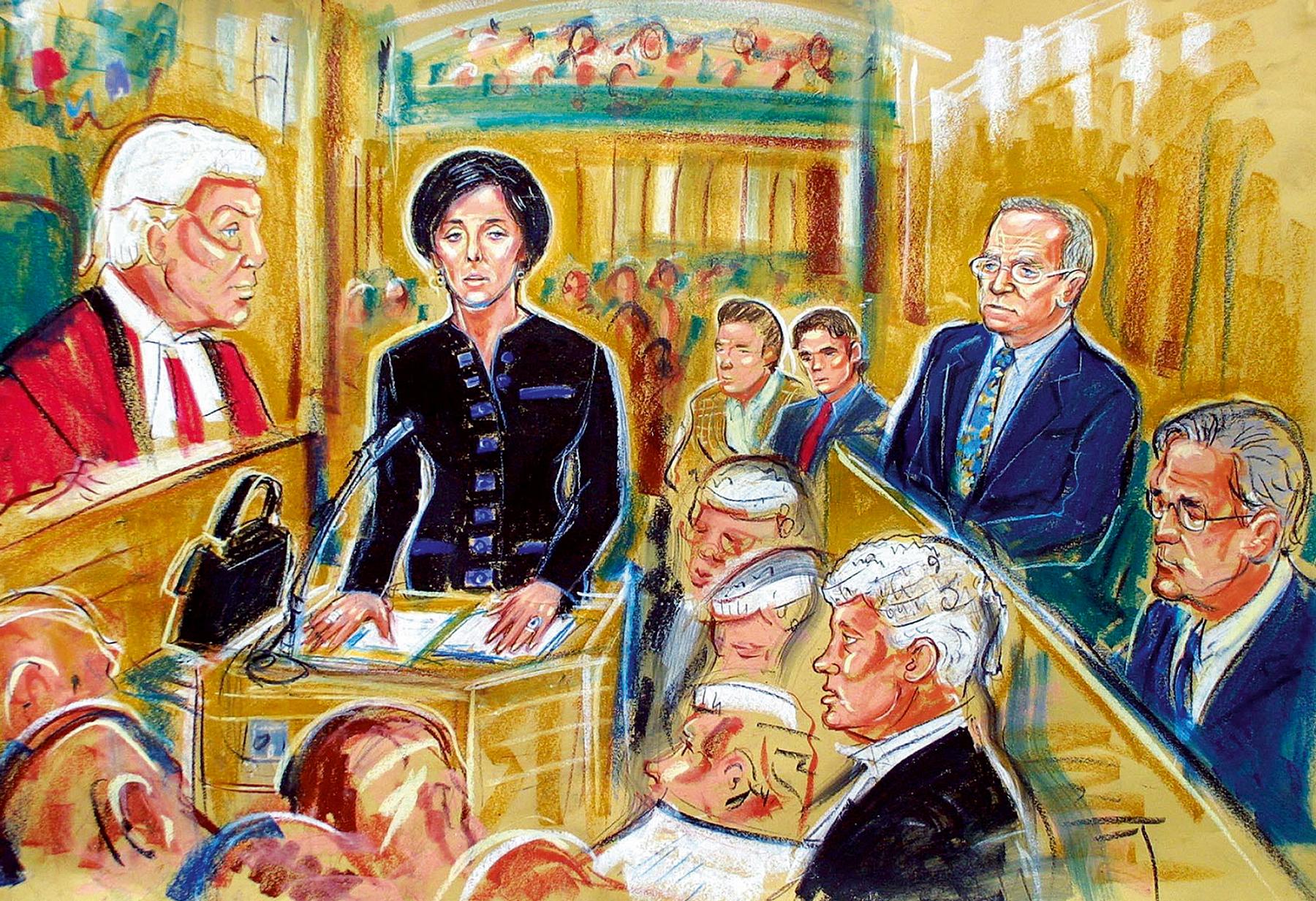
When justice is served, it is often Priscilla Coleman who captures the scene, in her gloriously detailed courtroom sketches. With a sharp eye and even sharper elbows, the glamorous Texan, 68, has been muscling her way into courtrooms for five decades, documenting everyone from infamous murderers and political scoundrels to warring WAGs. In pastels and in watercolours, Priscilla has been known to knock out 10 sketches a day, drawing entirely from memory, often on a pavement in east London.
Penny Martin: What is your routine before leaving for court?
Priscilla Coleman: First, I find my phone, figure out where am I supposed to go, and then hop in the shower, depending on what time I get the call.
PM: Who could be calling?
PC: ITN, Channel 4 News or, nowadays, my agent. It’s always been spontaneous in television and news, even when I was in the States. In the 1970s and 1980s I was art director for KTRK-TV, the ABC affiliate in Houston, Texas. In those days I did graphics for news and courtroom drawings. But David, my husband, said he’d had enough of Texas and wanted to return to the UK. Did I think I could adjust?
PM: Did he suspect it might be a difficult transition for you?
PC: Well, yeah! He’s English; he was a banker. We met through a friend in 1986; David was playing cricket with her fiancé. We were married in 1987 and came over that year.
PM: Cricket. Do you think the formality of English culture appealed to you?
PC: I think it did. Americans just adore people from the UK. I’d found this Sloane Ranger Diary, the one with Diana on the front.
PM: The book by Ann Barr and Peter York?
PC: And that told me a lot. What are these English people thinking? What are these rules they go by? Because I couldn’t figure this place out. What am I gonna do for work here? There weren’t many television channels, only four, and they didn’t turn on until midday. I felt daunted by the differences in language. How was I going to learn all these English spellings? In the end I dropped the graphics.
PM: How did you get your start here?
PC: I didn’t know who to talk to. I just walked and walked. First I figured out where the Royal Courts of Justice were. Then I ended up outside the Old Bailey, where an ITN reporter, Simon Cole, was finishing his piece to camera. They call crime the bread and butter of television news.
PM: You had your work with you!
PC: Oh yeah, I had my tape with my graphics and my court sketches. And he put me in touch with his news director. ITN tried me out at the Old Bailey first. I thought I would be allowed to draw in court, as I was used to in the States. But the revelation was that it’s against UK law to sketch in court for publication! The guys at the station explained: you have to leave, then find a place to work outside.
PM: You have to work in the street! How do you know when is the right time to leave the court?
PC: When I’ve seen something. I don’t need that long. I might take a textual note in my little reporter’s notepad. But sometimes you just look and say, “That’s going to be my only glance at that person.” De Kooning used to say, “I’m a glimpsing glimpser.”
PM: You seem particularly good at glimpsing style details. Your archive is like a library of the past 40 years of fashion. The hairstyles, the clothes!
PC: You see something — Rebekah Vardy in her primrose-yellow outfit — and it sticks in the mind. You’re like, “Oh, I love that colour,” and you have to do something with it. Then it just flows.
PM: The recent “Wagatha Christie” libel trial between the wives of ex-England football players. A total catwalk. But isn’t it nerve-racking stepping outside while the trial is still in motion?
PC: I’ll stay as long as I dare, and that’s when I have to get the drawing done, fast. If the deadline for delivery is 12.30, I have to be outside at 12.30 to email the sketch. Three is an easy group to whack out fast: the main witness, the judge and the barrister who’s asking the questions. Whoever is in the dock, that’s four. But it’s great when I know I’ve seen everything. That’s Wayne Rooney out of the witness box, boom — he didn’t stay in long. I saw everything before he went in, too: the knuckle-cracking, the yawning. He doesn’t even put his hand over his mouth, the naughty boy! He was looking up at the time to see: When are we going to finish? I’d love to know what he was thinking the whole time.
PM: Probably just that. Were you there for the ruling?
PC: It was sent out online. It seemed spot on to me and showed that if you don’t take things to court they have a chance to fade away. Vardy being skewered in the witness box was painful to watch.
PM: Have you always had a good memory?
PC: I think I have. But I’ve learned to look at people’s faces in a more verbal way, so they stick in my mind. I use repetition. Saying something over and over. Like “fried hair”, if this person has hair like they’ve put their finger in a light socket. Sometimes I’ll do an arrow for the way barristers wear their wigs — whether they flip it way down over their eyebrows or chuck it off to the side or knock it right back so you can see their hair. I didn’t understand at first there is kudos attached to a wig that is so worn it’s almost falling apart. If it’s the bright corn-blond, they go, “Oh, that’s a new barrister.”
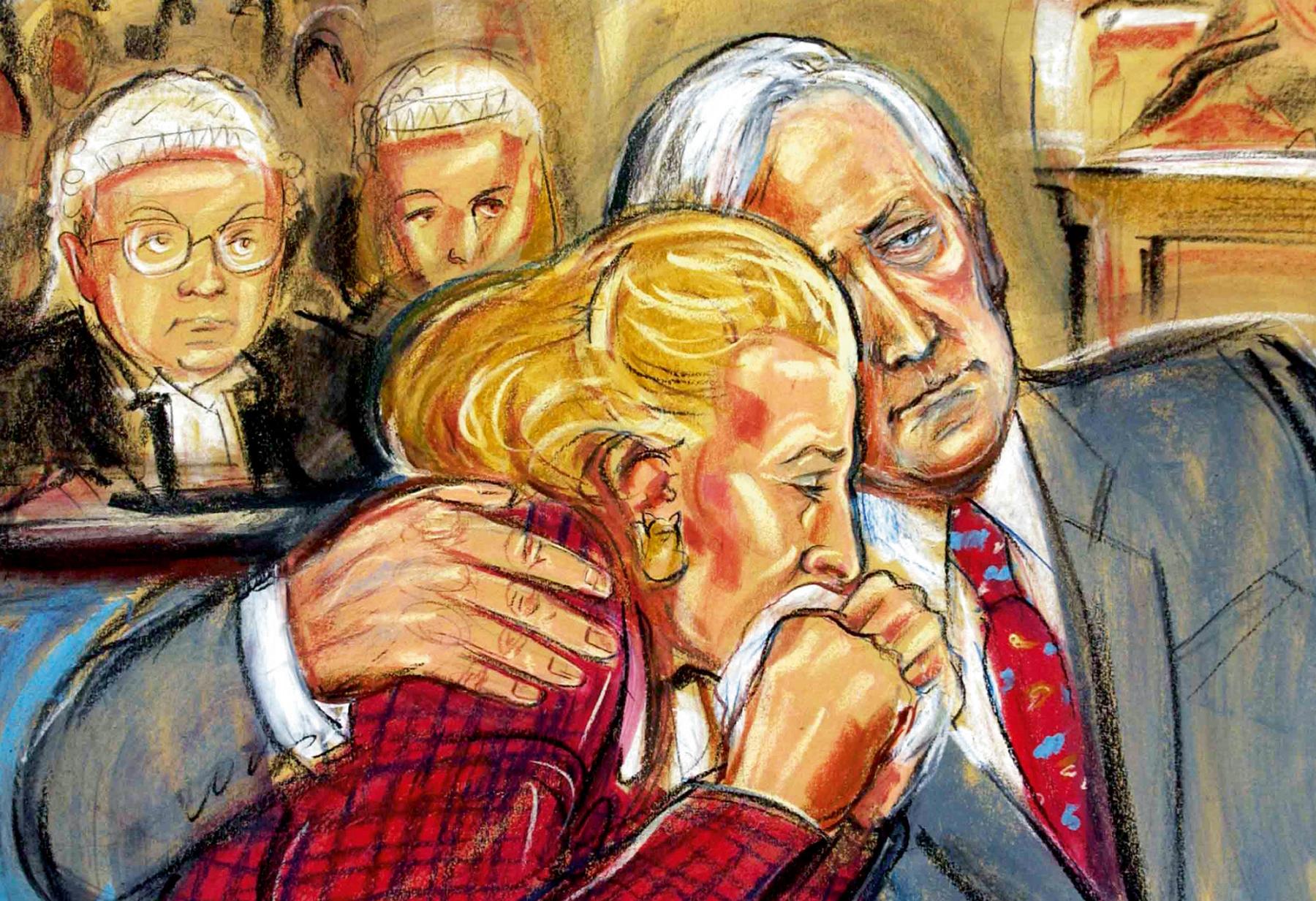
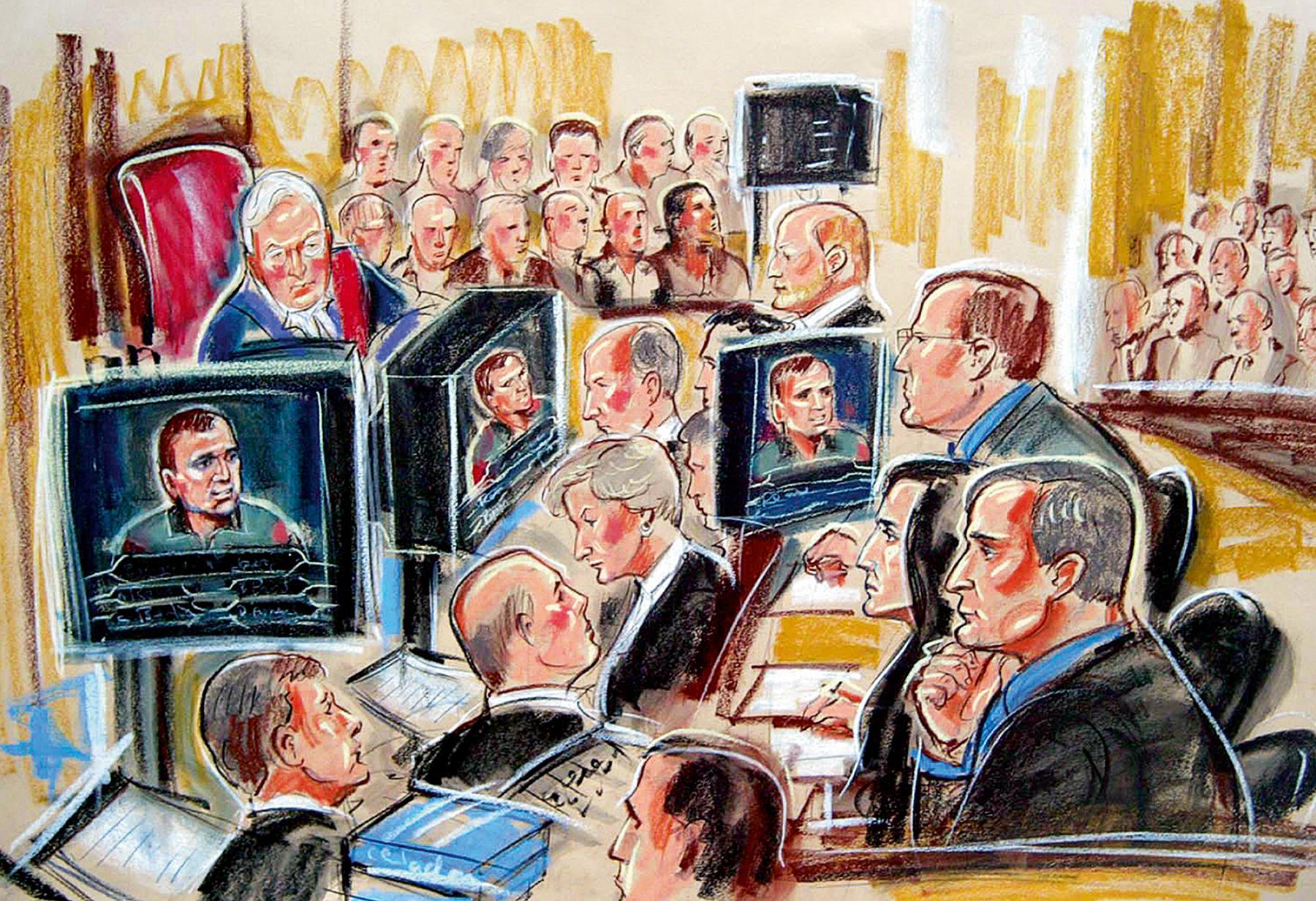
“I could be doing up to 10 sketches a day; you’re constantly responding to what’s happening in court.”
PM: What was your first big case?
PC: The Jeffrey Archer libel case against the Daily Star in 1987. That was huge, and fun. It was fascinating.
PM: Oh yes, he was awarded record damages for being accused of paying a prostitute for sex. I love your drawings of his wife, “the fragrant” Mary Archer. How long did that last?
PC: At least a month. They often do. The Rosemary West trial was at least a month. At Winchester, every single day. And the James Bulger court case. Soham — everyone would want to know what had happened that day. It was fast and furious, chaos.
PM: Those are truly awful cases. You see some of the worst aspects of humanity, day after day. I saw a picture in your archive of a man frying another man’s brain with a block of butter.
PC: Ah, yeah, the cannibal. There are so many horrific crimes, and truth is always stranger than fiction. Sometimes you think, I’m just lucky to be alive. You can’t really wash it off at the end of the day.
PM: Dreadful. You mentioned Soham was particularly demanding. How many drawings might you be commissioned to do in a day?
PC: I could be doing up to 10 sketches a day, sometimes more if there’s someone important in the witness box or there’s something fascinating the reporter needs to talk about. You’re constantly responding to what’s happening in court. The reporters interview the police to find out a little bit ahead of time.
PM: Are you ever called to work overseas?
PC: It’s happened. The Hamilton and Al Fayed case was on at the same time as the Lockerbie bombing trial, which was held in the Netherlands. ITN was more intent on covering Al Fayed and Hamilton so asked whether I could think of anyone. I recommended Siân Frances. She is good and fast, and I knew she could handle it.
PM: I gather there aren’t that many of you artists in Britain.
PC: No, only four now. Elizabeth Cook, a woman called Julia Quenzler, me, and Helen Tipper in Nottingham.
PM: All women. Were you exclusive to ITN at the time of the Hamilton case?
PC: At first it was freelance. I was on call to them, though other people could call me too. But when I was on contract I was exclusive. Not now —budgets are so stretched. Poor old ITN.
PM: Some of the trials you’ve mentioned are very serious. Is it important to dress accordingly?
PC: You need to look like you might be a lawyer, like you are meant to be there. It’s easier to be invisible. And it’s good to wear something that is easy to work in. This Paul Smith coat is handy. Navy, three-quarter-length; it looks kind of like a suit. There’s no breast pocket, but sometimes I just tuck my phone into my bra. In the early days we didn’t have phones, of course, though we had pagers. Now, I need my iPhone to photograph my finished drawing and email it to the editors.
PM: Your mother was an illustrator, wasn’t she? What was her work like?
PC: Her style was quite loose. Though after she had my brother and sister and me it became quite tight.
PM: Is that what makes a great drawing for you, a loose style?
PC: I like a fast image, almost like a fashion illustration. I watched a lot of television when I was a kid, and there was this court artist doing the Watergate trial, Howard Brodie. He only used maybe four colours. Waxy pencils. And it’s just line — beautiful line, line, line, line. He got the likeness, the shape of the politician’s face. Then there was an artist my mother didn’t approve of, Freda Reiter. She did a lot of work from photographs. All the heads were twisted around, like in The Exorcist, to recreate the reference!
PM: Is that what you hate in a drawing? Copying?
PC: Anything stiff, meticulous, like a wildlife drawing. Or where the artist has been struggling and just can’t get it. That’s agony. It happens. I really struggled with a sketch from the Wagatha Christie thing. We had a friend coming over, I was racing to knock out this drawing, and my brain was just not clicking in. I’m thinking, I know what Coleen looks like, I wanna show her cheekbones, but were they like this or were they like that? I can’t even draw and talk at the same time.
PM: What materials do you use?
PC: I use Neopastel oil pastels and watercolour paint sticks that I get at the London Graphic Centre in Covent Garden. I have some materials — Berol Prismacolor Art Stix — from the 1970s that are still handy to this day.
PM: The paper you work on is huge: three feet by two feet.
PC: Some of it is. I guess my eyesight is changing. And if you are drawing someone’s face, it’s nice to just be able to swing your arm around.
PM: Easier to fit in every face in a wide courtroom scene.
PC: I usually include everyone, because in the States reporters would say, “I want to talk about this crowd, everyone packed into the court like sardines.” That’s a Jane Rosenberg thing — she’s a New York courtroom artist. She probably does too much, and sometimes I do too much. My friend Bill Robles in LA told me, “Priscilla, leave off all this background! Keep it simple!”
PM: And his criticism you’ll take?
PC: Oh yeah. Bill did the Kardashians, and he also did Britney Spears. I think they even sent him to the Robert Durst case in New York. His work is white in the background; the focus is just on the person. I mean, I can see his point. But when someone says, “I want to see everything,” then that’s what you do.
PM: You are also comparing two legal systems: one that admits photographers, the other where barely anything can be recorded inside the room. What do you think of the recent ruling that allows cameras in crown courts?
PC: Scotland gave permission ages ago, of course — they have to ask permission of the people in the case. And the new ruling for England sounds great — and then you read the restrictions. The first case following the ruling, at the Old Bailey on 28 July, was like watching paint dry. Soul-destroying!
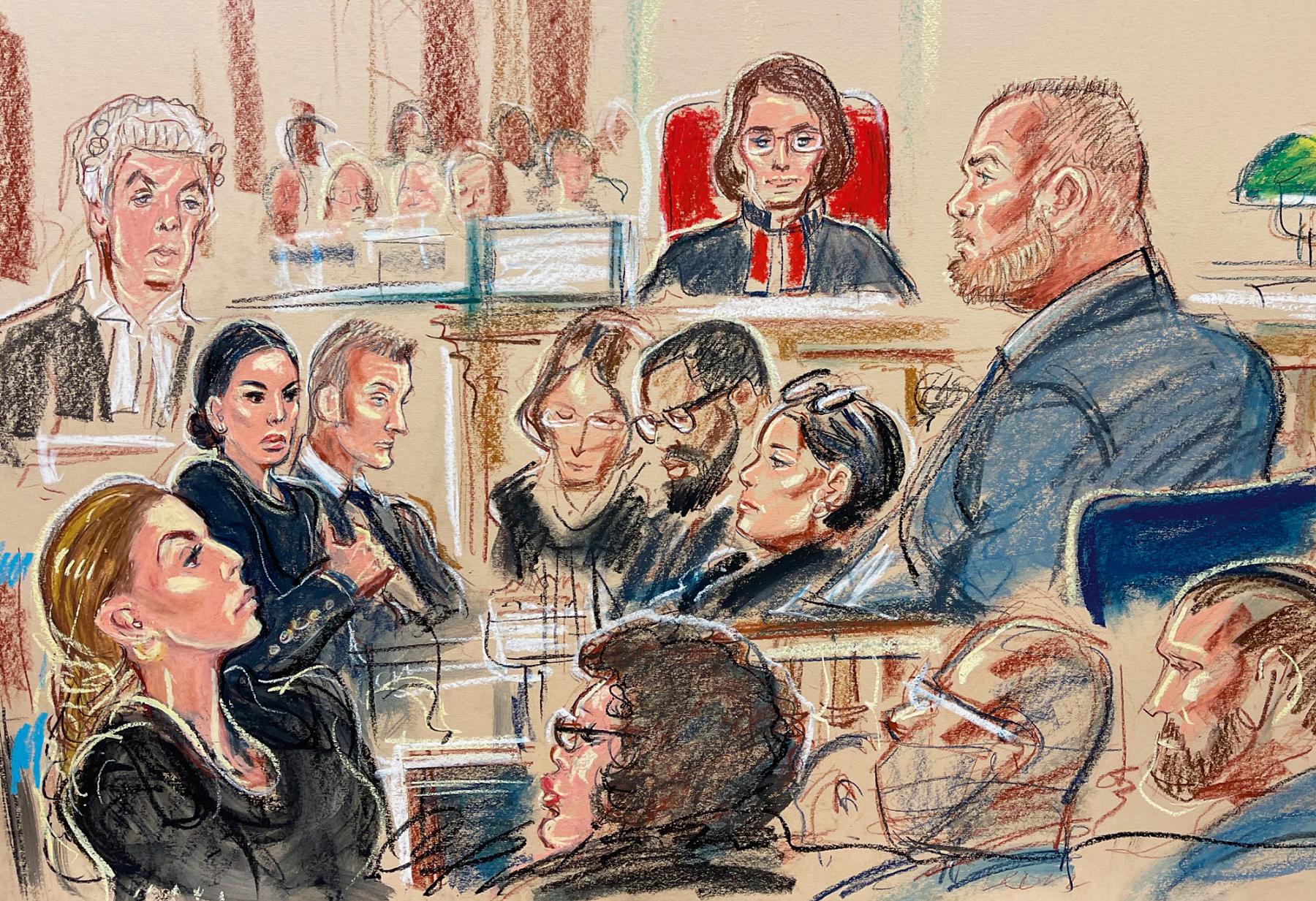
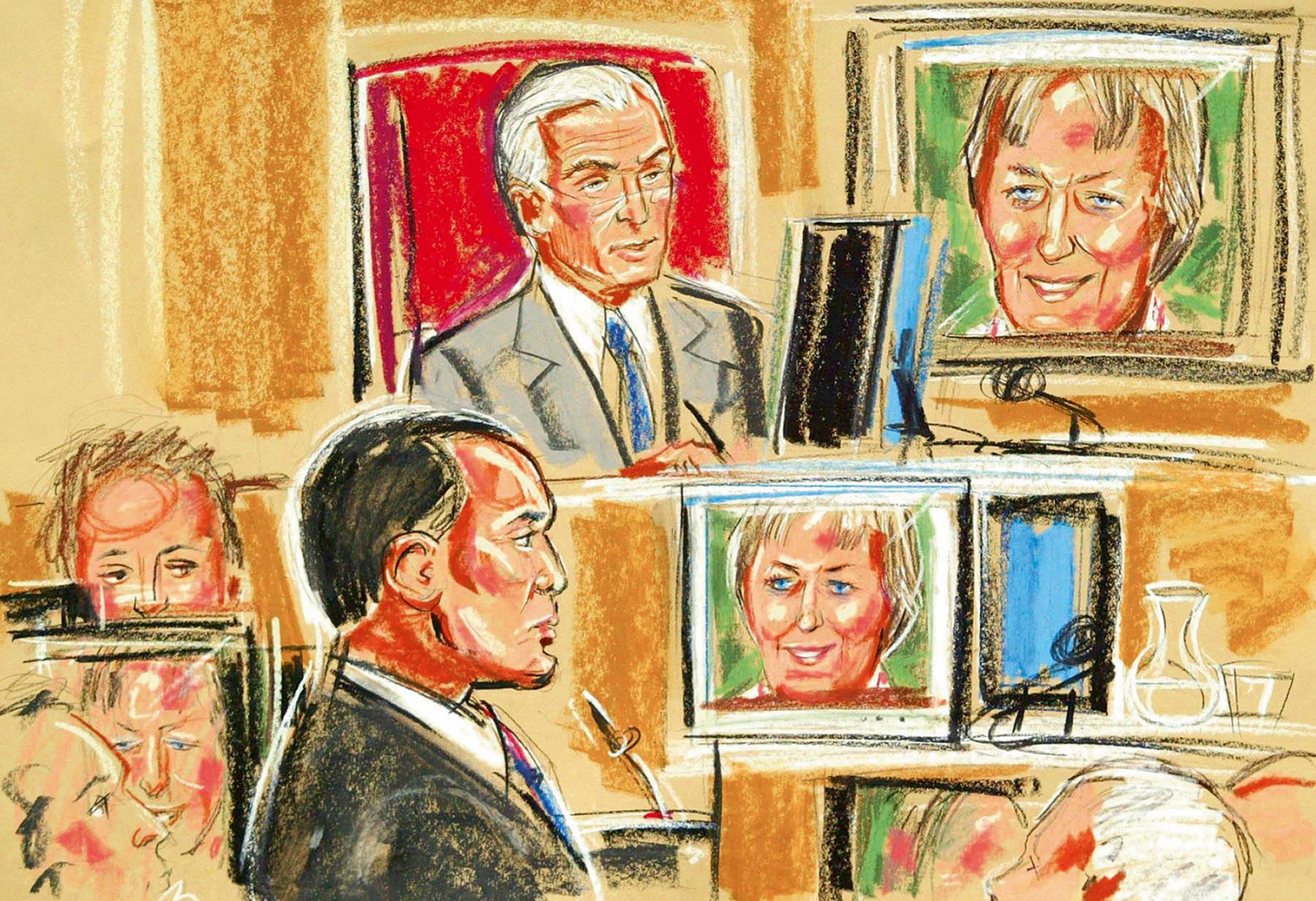
“It’s like working in the emergency room of a hospital, or in a war zone. The blood is flowing, and you have a job to do.”
PM: Is it a good thing for the public to be able to pick over every detail of a trial?
PC: No! It isn’t. But people find out anything they want to, really.
PM: I was surprised to learn that you don’t even get a designated seat. After all these years, you still have to fight your way through the crowds every time?
PC: Getting into court can be physically intimidating, especially when everyone wants to see Julian Assange; they just want to kill anyone who gets in their way. Actually, I want to talk to some judges at the Royal Courts of Justice about this — there needs to be some other way. I was having all my materials confiscated when I was doing that Boris Becker court case at Southwark Crown Court.
PM: Do you have a favourite court?
PC: I love court 13 at the Royal Courts of Justice. It’s beautiful, and the magical court that ends up with all of the craziest, most beautiful, weird, celebrity-orientated court cases.
PM: Such as?
PC: Let’s see, Hamilton and Al Fayed, Gillian Taylforth. The Wagatha Christie ones. Naomi Campbell might have been in that one too. The Old Bailey is gorgeous but in a different way. You can see it in the Alfred Hitchcock movie The Paradine Case. Gregory Peck played the barrister.
PM: Has the job changed much over time?
PC: Perhaps the cases have themselves. We did a lot of IRA-connected things in the early days. The Gibraltar shoot-to-kill enquiry. The terrorist-oriented things we cover now don’t concern Northern Ireland any more. It was great working with a big team in those days. The guys I worked with — it was mainly guys — were so funny! A lot of them are still working, still doing the news.
PM: Do you think news attracts a certain kind of personality?
PC: I can only compare it to working in the emergency room of a hospital, or in a war zone. The blood is flowing, and you have a job to do. It just clicks in, and you don’t think about it any more. That is the way my drawings happen.
PM: Is yours an easy career to plan around? Do you ever get to take a holiday?
PC: It’s never been convenient. We’ll be having a nice breakfast in a beautiful hotel, and there will be a call: “Saddam Hussein has just been found in his cave. Could you come back and recreate the scenes?”
PM: And at that moment are you dying to get back into the pool or have you already got your coat on?
PC: Oh, I’m ready to work! It’s news — I’m going to go do a job! It’s going to be a challenge, and it’s going to be great fun.
PM: You mention recreating Saddam Hussein. Several of your most famous pictures — the one of Heather Mills McCartney throwing water over Fiona Shackleton QC; Amy Winehouse and her ballet shoes — were recreated without your having been there.
PC: You feel like you are there sometimes. To do this job well you have to imagine: what would it be like? In television you need something visual on screen to explain some things. In Texas, when they started doing the lethal injection again in 1982, they would say to me, “They’ll let the cameraman in to get the shots of the death area and the gurney. Here is the photograph of the man who is going to be executed. Can you put it all together?” I remember working on a drawing of the Candy Man — who killed his son with the candy on Halloween — before leaving for a date one evening, thinking, Isn’t this a weird thing to do? I have a very weird job.
PM: You do. Is there anything you draw the line at sketching?
PC: There were some things I didn’t show that we maybe could have shown. Remember when Max Mosley was talking about the spankings? We didn’t show the extent of it. He was very bold. He said, “This is what I did for fun, and I liked it.” I looked up at him and thought, You’re the bravest man I’ve ever seen. And he smiled at me.
PM: Do you ever sell your sketches?
PC: Yes, a lot of them have been sold. Amy Winehouse is the number one request. Her mother bought one.
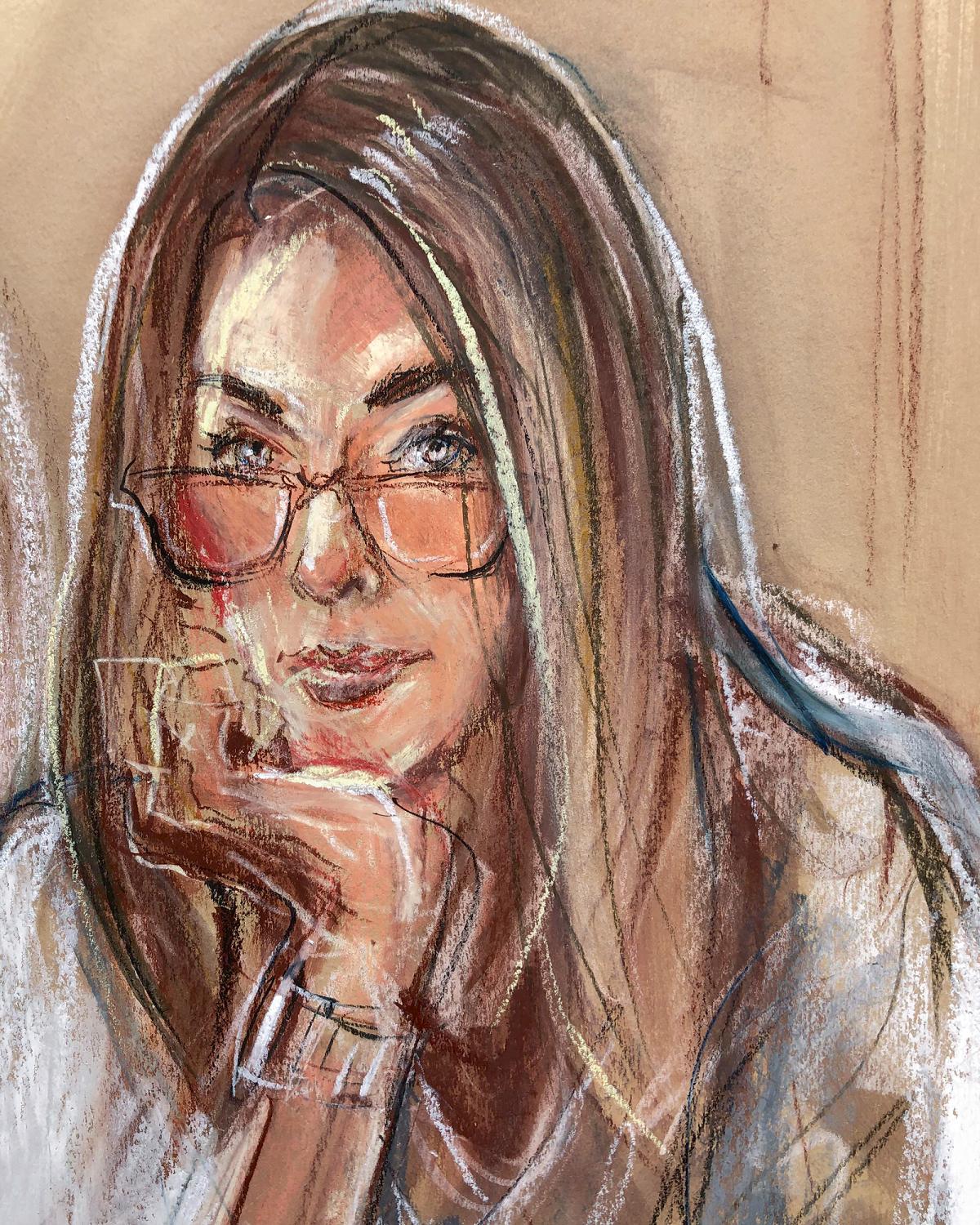
Penny MartinPenny Martin is editor in chief of The Gentlewoman. Other long job titles she has held include chair of Fashion Imagery at London College of Fashion, editor in chief of SHOWstudio.com, curator of special collections at The National Women’s Library and curator at The National Museum of Photography,…read more Illustrations by
Priscilla ColemanPriscilla Coleman has been drawing court scenes for over 20 years.read more
The six pictured court cases drawn from Priscilla’s archive, from the top: Archer v Express Newspapers; Hamilton v Al Fayed; R v Ingram, C, Whittock, T, and Ingram, D; Rebekah Vardy v Coleen Rooney; The Inquiry into the Circumstances Surrounding the Death of Dr David Kelly CMG by Lord Hutton.
This profile was originally published in The Gentlewoman nº 26, Autumn and Winter 2022.